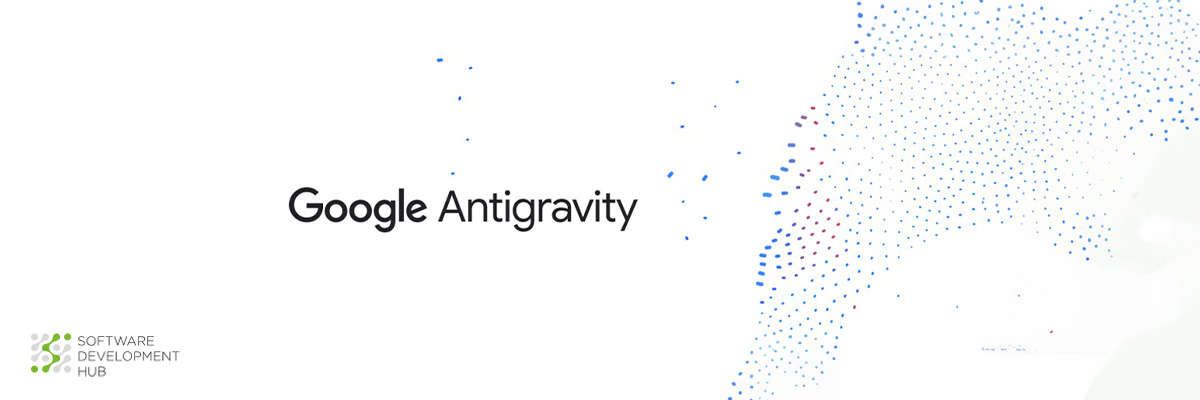Custom Chatbots with RAG: Enhancing Conversational AI
Retrieval-Augmented Generation (RAG) technology represents a significant shift in how businesses approach chatbot development. The numbers tell a compelling story: according to recent industry research, 65% of enterprises plan to implement RAG technology in their chatbots by 2026. This adoption trajectory becomes clearer when we examine performance metrics—RAG systems consistently achieve 95-99% accuracy on queries about recent events or updated policies.
Current market data reveals the momentum behind this technology. A survey of 300 AI professionals conducted recently shows that 12% already have RAG-enhanced conversational AI in production, while 60% are running pilot implementations, 24% are planning deployments, and 4% remain in the exploration phase. The appeal becomes evident when we consider RAG's core capabilities: improved relevance in responses, reduced hallucinations, better question interpretation, and stronger contextual consistency.
What makes RAG particularly valuable is its practical approach to creating AI assistants that can access real-time information. Industries requiring domain-specific expertise—healthcare and e-commerce being prime examples—find RAG chatbots especially beneficial. The technology bridges the gap between general language model capabilities and specialized knowledge requirements.
We'll cover everything from environment setup to implementing advanced features like stateful memory, providing you with the practical knowledge needed to build effective conversational AI solutions.
Understanding RAG and LangChain for Chatbot Development
Building intelligent chatbots demands more than basic natural language processing capabilities. Two technologies stand out as particularly valuable for developers creating sophisticated custom chatbots: Retrieval-Augmented Generation (RAG) and LangChain.
What is Retrieval-Augmented Generation (RAG)?
RAG represents a significant advancement in how large language models (LLMs) access and utilize information. Rather than relying exclusively on training data, RAG models query external knowledge sources—databases, documents, or APIs—before generating responses. This approach addresses a fundamental limitation of traditional LLMs: their knowledge cutoff dates and potential for outdated information.
The RAG process operates through four distinct phases:
- External Data Creation: Documents, databases, or APIs get converted into vector embeddings that AI systems can process and understand
- Relevance Search: User queries transform into vector representations, then match against the knowledge base for relevant information
- Prompt Augmentation: Retrieved information combines with the original user query to create an enhanced prompt
- Response Generation: Both the augmented prompt and the LLM's training data contribute to creating informed responses
Why does this matter for chatbot development? RAG delivers several critical advantages:
- Cost-effectiveness: Eliminates expensive model retraining when incorporating domain-specific information
- Current information: Maintains access to the latest data, ensuring response relevance
- Enhanced user trust: Source attribution allows users to verify information accuracy
- Reduced hallucinations: Significantly decreases false information generation
How LangChain simplifies chatbot workflows
LangChain serves as an open-source framework specifically designed to streamline applications powered by large language models. For chatbot development, LangChain's modular architecture proves particularly valuable.
The framework offers several essential components that address common development challenges:
- Chains: Form the foundation by linking sequences of actions—calling language models, retrieving database information, or processing user inputs
- Memory modules: Enable stateful applications, crucial for chatbots maintaining context across conversation turns
- Retrievers: Extract relevant information based on user queries through integration with vector databases like Pinecone
- Prompt templates: Provide reusable structures ensuring consistent LLM interactions
What sets LangChain apart is its ability to combine multiple functionalities within single prompt templates. Once user intent gets interpreted, the chatbot can retrieve external data using tools—stock prices, weather forecasts—or pull relevant information through RAG from knowledge bases.
The framework's data loader support further simplifies incorporating diverse information sources into custom chatbots.
Why combine RAG with LangChain for custom bots
The RAG-LangChain combination creates a robust foundation for chatbot development. Together, they enable several powerful capabilities:
External knowledge integration becomes seamless, allowing chatbots to access and process information from various sources while maintaining accuracy and contextual relevance. Consider a customer service chatbot connected directly to product documentation—it can provide precise technical answers without manual updating.
LangChain handles the complex infrastructure requirements that RAG implementation typically demands. Its RetrievalQA chain streamlines document retrieval and answer generation processes that would otherwise require extensive custom coding.
This integration supports advanced features including:
- Personalized responses: Conversation history analysis enables answers aligned with individual customer contexts
- Document summarization: Complex information gets condensed into digestible formats for end-users
- Context retention: ConversationalRetrievalChain manages multi-turn conversations while maintaining memory
The practical result? Chatbots that maintain coherent conversations while delivering factual, current information from specific knowledge domains. This proves especially valuable in industries where information accuracy matters most—healthcare, finance, or technical support environments.
Setting Up Your Environment to Build a RAG Chatbot
 Proper environment configuration forms the foundation of reliable chatbot development. Industry experience shows that developers who invest time in correct setup avoid significant debugging challenges later in the development cycle.
Proper environment configuration forms the foundation of reliable chatbot development. Industry experience shows that developers who invest time in correct setup avoid significant debugging challenges later in the development cycle.
Installing langchain, openai, and pinecone-client
RAG chatbot development requires specific core dependencies. Your system needs Python 3.8+ for compatibility with the required libraries—earlier versions lack support for essential features.
Additional packages enhance functionality based on your specific requirements. Document processing needs langchain-text-splitters for chunking and pypdf or docx2txt for file handling. OpenAI token management requires tiktoken, while extended integrations benefit from langchain-community.
Creating and securing OpenAI and Pinecone API keys
Both OpenAI and Pinecone require API keys for accessing their services. The OpenAI process involves several steps:
- Create an account at platform.openai.com
- Access the API section from your dashboard
- Generate a new secret key with appropriate naming
- Copy the key immediately—you cannot retrieve it later
Pinecone follows a similar but distinct process. After registration (free tier available), create a new project with specific configuration parameters. Choose your cloud provider (GCP, AWS) and environment (such as Iowa for GCP-starter). The API Keys section provides your authentication credentials.
Security practices for API keys cannot be compromised. Never commit keys to version control, embed them directly in source code, or deploy them in client-side applications. Team sharing violates OpenAI's terms of service and creates unnecessary security risks.
Environment variables provide the secure approach. Create a .env file with your credentials:
OPENAI_API_KEY=your_openai_key_here
PINECONE_API_KEY=your_pinecone_key_here
Load these variables in your Python code:
import os
from dotenv import load_dotenv
load_dotenv()
openai_api_key = os.environ["OPENAI_API_KEY"]
pinecone_api_key = os.environ["PINECONE_API_KEY"]
Remember to add .env to your .gitignore file to prevent accidental commits.
Setting up a virtual environment and requirements.txt
Virtual environments prevent dependency conflicts between projects—a critical consideration when working with multiple Python applications. Create and activate your isolated environment:
# Create virtual environment
python -m venv rag_chatbot_env
# Activation varies by operating system
# Linux/Mac:
source rag_chatbot_env/bin/activate
# Windows:
rag_chatbot_env\Scripts\activate
Your command prompt will display the environment name when activation succeeds.
Document your dependencies in requirements.txt for reproducible installations:
langchain==0.1.1
openai==0.27.7
pinecone-client==3.0.0
python-dotenv==1.0.0
pypdf==3.15.1
tiktoken==0.4.0
Others can replicate your exact environment using pip install -r requirements.txt.
Production deployments warrant additional security measures. Key Management Services provide enterprise-grade secret handling, while usage monitoring prevents unexpected charges from API overuse.
These foundational steps establish a secure, reproducible development environment. Proper setup now prevents deployment issues and security vulnerabilities that could compromise your RAG chatbot later.
Ingesting and Embedding Your Knowledge Base
With your development environment configured, the next step involves preparing your knowledge base for retrieval operations. This process converts raw documents into searchable vector representations that enable semantic similarity matching during chatbot conversations.
Loading PDF documents using PyPDFLoader
RAG-powered chatbots need reliable document ingestion capabilities. LangChain's PyPDFLoader handles PDF processing while maintaining important metadata like page numbers and source information.
The process starts with installing the required package:
pip install -qU pypdf
Next, implement the document loading functionality:
from langchain_community.document_loaders import PyPDFLoader
# Initialize the loader with your PDF file path
loader = PyPDFLoader("your_document.pdf")
# Load the document
pages = loader.load()
Each PDF page becomes a Document object containing extracted text in the page_content attribute alongside metadata including source and page number. Your chatbot can now access this structured document content.
Splitting documents with CharacterTextSplitter
Document chunking addresses the input size limitations of LLMs and embedding models. LangChain's CharacterTextSplitter provides configurable text segmentation options.
Start by importing the necessary component:
from langchain_text_splitters import CharacterTextSplitter
Configure the splitter parameters based on your requirements:
# Create a text splitter with specific parameters
text_splitter = CharacterTextSplitter(
separator="\n\n",
chunk_size=1000,
chunk_overlap=200,
length_function=len
)
# Split the loaded documents
text_chunks = text_splitter.split_documents(pages)
The chunk_size parameter controls the maximum characters per segment, while chunk_overlap maintains context between adjacent chunks. Separator settings like "\n\n" help preserve the natural structure of your documents.
For complex documents, RecursiveCharacterTextSplitter offers enhanced chunking by attempting to keep semantic units like paragraphs intact before applying further segmentation.
Creating vector embeddings with OpenAIEmbeddings
Document chunks require conversion to numerical vectors that capture semantic meaning. This enables similarity searches based on conceptual relationships rather than keyword matching alone.
An embedding represents text as a vector of floating-point numbers where vector distances correspond to semantic similarity between texts. Implementation follows this pattern:
from langchain_openai import OpenAIEmbeddings
# Initialize the embeddings model
embeddings = OpenAIEmbeddings(
model="text-embedding-3-large"
)
# This will be used in the next step when storing vectors
This configuration connects to OpenAI's embedding service, which processes each text chunk into dense vector representations suitable for similarity calculations.
Storing vectors in Pinecone index
Vector embeddings need specialized storage optimized for similarity search operations. Pinecone provides the vector database infrastructure required for efficient retrieval.
Configure your Pinecone connection and index:
import os
import pinecone
from langchain_pinecone import PineconeVectorStore
# Initialize Pinecone
pinecone.init(
api_key=os.getenv("PINECONE_API_KEY"),
environment="your-environment" # e.g., "us-west1-gcp"
)
# Create or connect to an index
index_name = "chatbot-knowledge-base"
# Store documents with their embeddings
vectorstore = PineconeVectorStore.from_documents(
text_chunks,
embeddings,
index_name=index_name
)
This process uploads your processed documents to Pinecone's vector database, enabling semantic similarity searches for user queries. When users ask questions, your chatbot will convert these queries into the same vector space and identify the most relevant document chunks.
The complete ingestion workflow establishes the knowledge foundation for context-aware responses. The next section demonstrates how to connect this indexed knowledge base to a functional chatbot using LangChain's retrieval components.
Building a Stateless RAG Chatbot with LangChain
With your knowledge base properly embedded and stored, the next phase involves creating the actual chatbot that will query this information to answer user questions. This section demonstrates how to build a stateless RAG chatbot using LangChain's core components.
Using RetrievalQA.from_chain_type() for Q&A
The RetrievalQA chain forms the backbone of stateless RAG chatbots, managing the entire process of document retrieval and response generation. This component bridges your vector store with a language model, creating a straightforward yet effective question-answering system.
Start by importing the necessary components:
from langchain.chains import RetrievalQA
from langchain_openai import ChatOpenAI
The chatbot creation process involves configuring the RetrievalQA.from_chain_type() method:
# Initialize our chat model
chat = ChatOpenAI(model="gpt-3.5-turbo", temperature=0)
# Create the RetrievalQA chain
qa = RetrievalQA.from_chain_type(
llm=chat,
chain_type="stuff",
retriever=vectorstore.as_retriever(),
return_source_documents=True,
verbose=True
)
The chain_type parameter significantly impacts how your chatbot processes retrieved documents. Four primary options exist:
"stuff" serves as the default choice, incorporating all retrieved text into a single prompt. This approach works effectively when document chunks remain small and limited in number.
"map_reduce" processes each document chunk separately before combining results, making it suitable for larger document sets requiring parallel processing.
"refine" takes an iterative approach, processing documents sequentially while refining the answer with each new document.
"map_rerank" evaluates separate responses from each document and ranks them by relevance.
For most applications, the "stuff" method provides adequate performance with standard document sizes.
Connecting vectorstore to LangChain retriever
How do we transform our vector store into something LangChain can effectively use? The .as_retriever() method converts your vector store into a retriever interface compatible with LangChain's ecosystem.
# Create a retriever from our vector store
retriever = vectorstore.as_retriever(
search_type="similarity",
search_kwargs={"k": 3}
)
This configuration offers considerable flexibility through its parameters. The search_type can be set to "similarity" for standard vector searches or "mmr" (Maximum Marginal Relevance) to optimize for both relevance and diversity. Meanwhile, search_kwargs allows specification of additional parameters, particularly k for controlling the number of documents retrieved.
You can also implement quality thresholds to ensure only sufficiently relevant documents are returned:
retriever = vectorstore.as_retriever(
search_type="similarity_score_threshold",
search_kwargs={"score_threshold": 0.5}
)
Generating responses with ChatOpenAI
The language model component handles the final response generation. OpenAI's chat models integrate seamlessly through LangChain's ChatOpenAI class:
# Ask a question
result = qa.invoke({"query": "What are the key features of our product?"})
# Print the answer
print(result["result"])
# Optionally, print the source documents
if "source_documents" in result:
print("\nSources:")
for doc in result["source_documents"]:
print(f"- {doc.metadata.get('source', 'Unknown')}, Page: {doc.metadata.get('page', 'Unknown')}")
Setting the temperature parameter to 0 ensures more deterministic responses focused on factual information rather than creative outputs.
Creating an interactive experience requires wrapping this functionality within a simple loop:
while True:
question = input("Ask a question (or 'quit' to exit): ")
if question.lower() == "quit":
break
result = qa.invoke({"query": question})
print("\nAnswer:", result["result"])
This stateless approach excels in straightforward question-answering scenarios but presents clear limitations—each question exists in isolation without memory of previous interactions. The next section addresses this constraint by exploring conversation memory through LangChain's ConversationalRetrievalChain.
The combination of vector search and language model generation creates a functional RAG chatbot capable of delivering accurate, context-aware responses from your knowledge base. This foundation supports more sophisticated conversational AI applications.
Enhance Your Chatbot with Stateful Memory
The distinction between basic Q&A systems and genuine conversational interfaces centers on memory capabilities. Stateless chatbots process each query independently, while stateful systems maintain context across exchanges, creating more natural user interactions.
Using ConversationalRetrievalChain for context retention
LangChain's ConversationalRetrievalChain provides memory-enabled chatbot functionality through a sophisticated three-step process. This component differs from simple retrieval chains by processing both conversation history and new questions simultaneously:
- Chat history and the current question merge into a "standalone question" containing necessary context
- This reformulated query retrieves relevant documents from the knowledge base
- Retrieved information combines with conversation context to generate contextually aware responses
The implementation requires minimal additional code:
from langchain.chains import ConversationalRetrievalChain
chat_history = [] # Store conversation as a sequence of messages
conversational_chain = ConversationalRetrievalChain.from_llm(
llm=chat_model,
retriever=vectorstore.as_retriever(),
memory=memory_module
)
Managing chat history for multi-turn conversations
Research indicates 77% of AI conversations include multiple exchanges, making proper history management essential. Different approaches address varying requirements:
- Buffer Memory: Stores complete conversation history but risks exceeding token limits
- Window Memory: Retains only the last k interactions (e.g., 5 most recent exchanges)
- Summary Memory: Condenses older exchanges while preserving key information
Implementation involves storing each interaction systematically:
# Store each interaction
response = conversational_chain.invoke(
{"question": user_question, "chat_history": chat_history}
)
chat_history.extend([(user_question, response["answer"])])
Improving follow-up question handling
Follow-up questions like "Tell me more about it" require contextual understanding. Without memory, chatbots respond with confusion: "What would you like more information about?"
Effective strategies for handling contextual queries include:
- Query Expansion: Reformulate ambiguous queries using context from previous exchanges
- Similarity Checking: Determine if a question relates to previous conversation (threshold ≥0.20)
- Context Pruning: Remove irrelevant conversation history while preserving critical context
Each follow-up builds upon previous interactions, creating coherent conversations that feel natural while maintaining access to your knowledge base. This approach particularly benefits applications where users need to drill down into complex topics or request clarification on previous responses.
Breaking Down LangChain Chains and Prompts
The architecture of LangChain reveals a sophisticated system designed around modular components that work together to enable complex conversational AI capabilities. Understanding these components provides the foundation for making informed decisions about implementation approaches.
Understanding RetrievalQA vs ConversationalRetrievalChain
The choice between RetrievalQA and ConversationalRetrievalChain reflects different architectural approaches to handling user interactions:
RetrievalQA operates as a stateless system, treating each query as an independent transaction. This approach excels in scenarios where questions don't build upon previous context—think FAQ systems or single-point information requests. The system retrieves relevant documents, processes them, and generates a response without maintaining any memory of previous interactions.
ConversationalRetrievalChain introduces state management through a two-phase processing model. The system first condenses the current question with existing chat history into a standalone query, then proceeds with document retrieval and response generation. This architecture enables contextual awareness and natural follow-up conversations.
The architectural difference has practical implications for system design. ConversationalRetrievalChain requires additional computational overhead for history processing but provides significantly better user experience in interactive scenarios.
Prompt templates used in LangChain chains
LangChain's prompt template system provides a structured approach to managing how information flows through the system:
String PromptTemplates handle simple variable substitution within text strings: PromptTemplate.from_template("Tell me a {adjective} joke about {content}"). This approach works well for straightforward formatting needs.
ChatPromptTemplates structure conversations by defining message roles and content: ChatPromptTemplate([("system", "You are a helpful assistant"), ("user", "Tell me about {topic}")]). This template type aligns with how modern chat models process conversations.
MessagesPlaceholder enables dynamic injection of variable-length message sequences: MessagesPlaceholder("msgs"). This component proves essential for handling conversation history in stateful systems.
Chain types: stuff, map_reduce, refine
The chain type selection determines how your system processes and combines information from multiple document sources:
Stuff represents the most straightforward approach—all retrieved documents get combined into a single prompt sent to the language model. This method works effectively when document chunks are small and the total context remains within model limits.
Map-reduce employs a divide-and-conquer strategy, processing each document chunk independently before combining results. This approach scales well with larger document sets and enables parallel processing, though it may lose some cross-document connections.
Refine uses an iterative approach, starting with an initial answer and progressively improving it by incorporating information from each subsequent document. This method maintains coherence across sources but processes documents sequentially, which can impact performance with large knowledge bases.
Each chain type represents a different trade-off between processing efficiency, context preservation, and scalability requirements.
Conclusion
Building custom chatbots with RAG technology represents more than just a technical achievement—it opens new possibilities for how organizations interact with information and serve their users. The combination of external knowledge access with conversational AI creates solutions that deliver both accuracy and natural interaction patterns.
The implementation path we've outlined—from environment setup through stateful memory integration—provides a practical framework for creating chatbots that can handle real-world business requirements. These systems excel particularly in scenarios where current, domain-specific information matters most: customer support, technical documentation, policy guidance, and specialized consulting.
What makes RAG-powered chatbots especially valuable is their ability to maintain relevance over time. Unlike traditional systems that become outdated as information changes, RAG chatbots stay current through their connection to live knowledge bases. This characteristic addresses one of the fundamental challenges in enterprise AI applications: keeping automated systems aligned with evolving business knowledge.
Different implementation approaches serve different needs. Stateless systems work well for straightforward question-answering scenarios, while conversational chains with memory enable more sophisticated interactions. The choice between chain types—stuff, map-reduce, or refine—depends on your specific document characteristics and response requirements.
Looking ahead, RAG technology will likely become standard practice for enterprise chatbots. The ability to combine large language model capabilities with proprietary knowledge sources offers competitive advantages that are difficult to achieve through other approaches. Organizations that master these implementation patterns now position themselves well for the continued evolution of AI-powered business tools.
The technical foundation provided by LangChain makes sophisticated RAG implementations accessible to development teams without requiring extensive AI research backgrounds. This democratization of advanced conversational AI capabilities means more organizations can build custom solutions tailored to their specific operational needs.
Whether your goal is improving customer service efficiency, creating internal knowledge assistants, or building specialized advisory tools, RAG-powered chatbots provide a robust foundation for success. The approaches covered here establish the groundwork for more advanced implementations as your requirements evolve.
Categories
About the author
Share
Need a project estimate?
Drop us a line, and we provide you with a qualified consultation.







